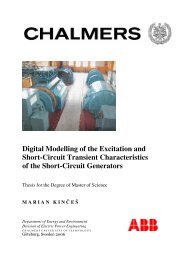THE IGBT TEST SETUP DESIGN - webfiles its vmware
THE IGBT TEST SETUP DESIGN - webfiles its vmware
THE IGBT TEST SETUP DESIGN - webfiles its vmware
You also want an ePaper? Increase the reach of your titles
YUMPU automatically turns print PDFs into web optimized ePapers that Google loves.
<strong>THE</strong> <strong>IGBT</strong> <strong>TEST</strong> <strong>SETUP</strong> <strong>DESIGN</strong><br />
Master Thesis<br />
By<br />
Kun Liu<br />
Abdirahman Hirsi<br />
Division of Electric Power Engineering<br />
Department of Energy and Environment<br />
CHALMERS UNIVERSITY OF TECHNOLOGY<br />
Gothenburg, Sweden 2008
Abstract<br />
An experimental half bridge converter setup is designed in order to explore the switching<br />
characteristics and losses of a new type of <strong>IGBT</strong> module. A specific digital control<br />
circuit and a drive circuit for an <strong>IGBT</strong> are designed and integrated into one PCB<br />
which can provide different kinds of precise <strong>IGBT</strong> gate signals.<br />
The switching characteristics and losses are investigated under different parameters<br />
both in a hardware and a simulation. It can be observed that the switching<br />
losses are increasing with the increase of voltage and current levels. Increasing the<br />
gate resistance also tends to increase the <strong>IGBT</strong> switching losses, while the reverse<br />
recovery losses of the free-wheeling diode decrease. The switching characteristics of<br />
the <strong>IGBT</strong> are not affected by temperature, but the reverse recovery losses increase<br />
with the temperature. The stray inductance has a negative effect, since it causes the<br />
oscillation both in the voltage and current waveforms.<br />
i
Acknowledgements<br />
This thesis work was carried out at the Division of Electric Power Engineering, Department<br />
of Energy and Environment of Chalmers University of Technology as part<br />
of the Masters Programme in Electric Power Engineering.<br />
The authors would like to thank the following people whose contribution made<br />
the thesis succeed. Prof. Torbjörn Thiringer, the supervisor and examiner, for his<br />
creative suggestions, constant support and encouragement during this research. PhD<br />
student Andreas Karvonen for the design and construction of the control and drive<br />
PCB; Robert Karlsson for advice and help with the test circuit; Magnus Ellsén for<br />
help in the workshop; Stefan Lundberg for his support; other staff at the department<br />
and fellow master students; last but not least,our families and friends for their love<br />
and support.<br />
iii
Table of Contents<br />
Abstract<br />
Acknowledgements<br />
Table of Contents<br />
i<br />
iii<br />
v<br />
1 Introduction 1<br />
1.1 Background . . . . . . . . . . . . . . . . . . . . . . . . . . . . . . . . 1<br />
1.2 Previous work brief introduction . . . . . . . . . . . . . . . . . . . . . 3<br />
1.3 Purpose of this thesis . . . . . . . . . . . . . . . . . . . . . . . . . . . 4<br />
2 The Theory of <strong>IGBT</strong> 5<br />
2.1 Structure of the IBGT . . . . . . . . . . . . . . . . . . . . . . . . . . 5<br />
2.2 I-V characteristics . . . . . . . . . . . . . . . . . . . . . . . . . . . . . 6<br />
2.3 Switching characteristics . . . . . . . . . . . . . . . . . . . . . . . . . 7<br />
3 Experimental Setup Realization 11<br />
3.1 Main converter circuit setup . . . . . . . . . . . . . . . . . . . . . . . 11<br />
3.1.1 Model 1 . . . . . . . . . . . . . . . . . . . . . . . . . . . . . . 11<br />
3.1.2 Model 2 . . . . . . . . . . . . . . . . . . . . . . . . . . . . . . 14<br />
3.2 Simulation setup . . . . . . . . . . . . . . . . . . . . . . . . . . . . . 16<br />
3.3 <strong>IGBT</strong> control circuit design . . . . . . . . . . . . . . . . . . . . . . . 19<br />
3.4 <strong>IGBT</strong> drive circuit design . . . . . . . . . . . . . . . . . . . . . . . . 22<br />
3.5 Inductor design . . . . . . . . . . . . . . . . . . . . . . . . . . . . . . 24<br />
3.6 Capacitor bank design . . . . . . . . . . . . . . . . . . . . . . . . . . 27<br />
3.7 Heating setup design . . . . . . . . . . . . . . . . . . . . . . . . . . . 28<br />
4 Measurements 31<br />
4.1 Voltage measurements . . . . . . . . . . . . . . . . . . . . . . . . . . 31<br />
4.2 Current measurements . . . . . . . . . . . . . . . . . . . . . . . . . . 32<br />
v
vi<br />
5 Results and Analysis 35<br />
5.1 Control waveform . . . . . . . . . . . . . . . . . . . . . . . . . . . . . 35<br />
5.2 Turn-on transient . . . . . . . . . . . . . . . . . . . . . . . . . . . . . 36<br />
5.3 Turn-off transient . . . . . . . . . . . . . . . . . . . . . . . . . . . . . 39<br />
5.4 Effect of gate resistance . . . . . . . . . . . . . . . . . . . . . . . . . 41<br />
5.5 Effect of current . . . . . . . . . . . . . . . . . . . . . . . . . . . . . . 45<br />
5.6 Effect of temperature . . . . . . . . . . . . . . . . . . . . . . . . . . . 46<br />
6 Conclusion and outlook 48<br />
6.1 Conclusion . . . . . . . . . . . . . . . . . . . . . . . . . . . . . . . . . 48<br />
6.2 Future work . . . . . . . . . . . . . . . . . . . . . . . . . . . . . . . . 49<br />
Bibliography 50<br />
A Control and drive circuit schematics 52
Chapter 1<br />
Introduction<br />
1.1 Background<br />
As power conversion today and even more in the future relies more on switch applications,<br />
semiconductor manufacturers need to create products that approach the ideal<br />
switch. The ideal switch would have: 1) zero resistance or forward voltage drop in<br />
the on-state, 2) infinite resistance in the off-state, 3) switch with infinite speed, and<br />
4) would not require any input power to make it switch.<br />
By combining the low conduction loss of a BJT with the switching speed of a power<br />
MOSFET an optimal solid state switch would exist.<br />
The Insulated-Gate Bipolar<br />
Transistor (<strong>IGBT</strong>) technology offers a combination of these attributes, and <strong>IGBT</strong> is<br />
now beginning to have a major impact on the Power Electronic Systems designed for<br />
industrial, consumer applications.<br />
A review of Fig.1.1 indicates that <strong>IGBT</strong> Modules are expected to take applications<br />
where earlier MOSFET Modules and Bipolar Darlington Modules were used,<br />
as they will operate in hard switching applications upwards of 20kHz and higher in<br />
soft switching applications.<br />
Also they serve the lower 1 - 10kHz range previously<br />
dominated by Bipolar Transistor modules, up to 1MW applications. Tab. 1 shows<br />
1
Chapter 1. Introduction 2<br />
Figure 1.1: Power Devices Application<br />
the comparison of switching devices.<br />
Table 1.1: Comparison of switching-device characteristics<br />
Chatacteristics MOSFET <strong>IGBT</strong> Bipolar<br />
Drive type Voltage Voltage Current<br />
Drive power Minimal Minimal Large<br />
Drive complexity Simple Simple Medium<br />
Current density for High at low Very high (small Medium (severe<br />
a given voltage voltages, low at trade-off with trade-off with<br />
drop high voltages switching speed) switching speed)<br />
Switching losses Very low Low to medium, Medium to high,<br />
depending on trade-off depending on trade-off<br />
with conduction losses with conduction losses
Chapter 1. Introduction 3<br />
At operating frequencies between 1 and 50 kHz, <strong>IGBT</strong>s offer an attractive solution<br />
over the traditional bipolar transistors, MOSFETs and thyristors. Compared to<br />
thyristors, the <strong>IGBT</strong> is faster, has better dv/dt immunity and, above all, has better<br />
gate turn-off capability. While some thyristors such as GTOs are capable of being<br />
turned off at the gate, substantial reverse gate current is required, whereas turning<br />
off an <strong>IGBT</strong> only requires that the gate capacitance be discharged. [1]<br />
Since <strong>IGBT</strong> has been applied to industry for several decades, the latest generation<br />
of <strong>IGBT</strong>s with rated voltage 6500V and rated current 1200A has been produced and<br />
used as power switches in power system.<br />
1.2 Previous work brief introduction<br />
In a previous work, a pre-study was done concerning how the voltage level affects the<br />
<strong>IGBT</strong> conduction and switching losses.[2]<br />
In another work [3], a test circuit with a 300V, 40A <strong>IGBT</strong> was designed. In order<br />
to explore the switching characteristics of this <strong>IGBT</strong> a test system –including a control<br />
circuit, a drive circuit and the main test circuit– was built. Furthermore, a current<br />
transformer was also designed and constructed to measure the current through the<br />
<strong>IGBT</strong>. Energy losses were investigated under different parameters.<br />
The control circuit, in this work, could not generate well specified control signals,<br />
and the drive circuit was separated from the control circuit, which had a negative<br />
impact on the control signal to the gate of the <strong>IGBT</strong>.
Chapter 1. Introduction 4<br />
1.3 Purpose of this thesis<br />
The aim of this thesis is to design and realize an <strong>IGBT</strong> test setup, to measure and explore<br />
the switching characteristics of a new <strong>IGBT</strong> module (CM300DC-24NFM) with<br />
higher rating voltage and current (V CES =1200V, I C =300A) both in a simulation and<br />
a hardware setup. Moreover another vital objective is to design a PCB including a<br />
specified digital control circuit and a drive for this <strong>IGBT</strong>. In addition, an investigation<br />
concerning the turn-on and turn-off losses under different gate resistances, load<br />
inductances and temperatures are carried out.
Chapter 2<br />
The Theory of <strong>IGBT</strong><br />
2.1 Structure of the IBGT<br />
Figure 2.1: <strong>IGBT</strong> structure<br />
As shown in Fig. 2.1 the <strong>IGBT</strong> structure is similar to that of the vertical diffused<br />
MOSFET. The main difference is the p+ layer that forms the drain of the <strong>IGBT</strong>. This<br />
layer forms a PN junction, which injects minority carriers into what would appear to<br />
be the drain region of the vertical MOSFET. [4].<br />
5
Chapter 2.The Theory of <strong>IGBT</strong> 6<br />
Figure 2.2: <strong>IGBT</strong> structure resembles as a thyristor (a series of PNPN junctions)<br />
The combination of the NPN and PNP bipolar transistors makes up the parasitic<br />
thyristor, as shown in Fig. 2.2. The thyristor can cause the <strong>IGBT</strong> to latch up which<br />
is undesirable turn-on.<br />
Latchup can be avoided through the design of the <strong>IGBT</strong><br />
by optimizing the doping levels and geometries of the various regions shown in Fig.<br />
2.1. In Fig. 2.2, R 1 is the drift region resistance; R 2 is the body region spreading<br />
resistance.<br />
2.2 I-V characteristics<br />
Figure 2.3: I-V Characteristics of <strong>IGBT</strong>
Chapter 2.The Theory of <strong>IGBT</strong> 7<br />
The I-V characteristics of an n-channel <strong>IGBT</strong> are shown in Fig. 2.3. In the forward<br />
direction the <strong>IGBT</strong> I-V characteristics are similar to those of a logic-level BJT expect<br />
that the controlling parameter is an input voltage (V GS ), rather than an input current.<br />
Since the <strong>IGBT</strong> is basically a MOSFET, the gate-source voltage controls the state<br />
of the device as mentioned in the previous. When V GS is less than a certain voltage<br />
which is called voltage threshold, there is no inversion layer created to connect the<br />
drain from the source and hence, the device is in the off state. When V GS exceeds<br />
the threshold, the <strong>IGBT</strong> is turned to the on-state.[5]<br />
2.3 Switching characteristics<br />
Turn-on<br />
The turn-on switching characteristics for an <strong>IGBT</strong> transistor are similar to that<br />
of a MOSFET. The whole process is indicated in the Fig. 2.4.<br />
Figure 2.4: <strong>IGBT</strong> turn-on switching characteristics
Chapter 2.The Theory of <strong>IGBT</strong> 8<br />
As shown in the figure, during the delay time t d(on) the gate-emitter voltage increases<br />
to the threshold voltage V GE(th) of the device. This is caused by the gate<br />
resistance R g and the input capacitances (C GC and C GE ). But the miller effect capacitance,<br />
C GC is very small that <strong>its</strong> affect can be neglected. Beyond this time the<br />
collector current starts to increase linearly until it reaches to the full load current.<br />
During the time when i C =I 0 the voltage V GE is first kept constant and at this moment<br />
the collector current flows through C GC only, that causes that the voltage V CE<br />
decreases to the zero on-state. After this moment the voltage V GE starts to increase<br />
until it reaches to V GG .[6]<br />
Turn-on switching losses: Turn-on switching losses are the amount of total energy<br />
losses during turn on under inductive load. It is normally measured from the point<br />
where the collector current starts to flow to the point where the collector-emitter<br />
voltage drops completely to zero. The turn on energy losses calculation is given by<br />
the equation below.<br />
where,<br />
E loss(on) =<br />
∫ ti +t on<br />
t i<br />
v CE (t)i C (t)dt (2.3.1)<br />
t i is the time when the current starts to rise<br />
t on is the duration for the turn-on transient<br />
Turn-off<br />
The whole turn-off process is indicated in the Fig. 2.5.
Chapter 2.The Theory of <strong>IGBT</strong> 9<br />
Figure 2.5: GBT turn-off switching characteristics<br />
The transistor is turned off by removing the gate voltage, V GE . As shown in the<br />
figure, both the voltage V CE (t) and the current i C (t) are kept constant until the gate<br />
voltage reaches the voltage V GE (I on ) which is used to keep the current i C (t) in steady<br />
on state. This moment is called the delay off time. After this the collector voltage<br />
V CE starts to increase. The rate of rise for the collector voltage is determined by the<br />
gate resistance. When the collector voltage reaches the input voltage the collector<br />
current starts to decrease and the free-wheeling diode starts to conduct.[6]<br />
The major difference between the <strong>IGBT</strong> turn-off and the MOSFET turn-off is<br />
observed in the collector current waveform where there are two distinct time intervals.<br />
The rapid drop that occurs during the t fi1 interval corresponds to the turn-off of the<br />
MOSFET section of the <strong>IGBT</strong>. The ’tailing’ of the collector current during the second<br />
interval t fi2 is due to the stored charge in the n-drift region.[5]<br />
Turn-off switching losses: Turn-off switching are the amount of total energy losses<br />
during the turn off under inductive load. It is measured from the point where the<br />
collector-emitter voltage begins to rise to the point where the collector current falls
Chapter 2.The Theory of <strong>IGBT</strong> 10<br />
completely to zero. The turn off energy losses calculation is given by the equation<br />
below.<br />
where,<br />
E loss(off) =<br />
∫ tv+t off<br />
t v<br />
v CE (t)i C (t)dt (2.3.2)<br />
t v is the time when the voltage starts to rise<br />
t off is the duration for the turn-off transient
Chapter 3<br />
Experimental Setup Realization<br />
In this chapter the working principle of the test setup is first introduced. The simulations<br />
of the test circu<strong>its</strong> are also described. Then the constructions of the components<br />
for the experimental test setup are presented.<br />
3.1 Main converter circuit setup<br />
3.1.1 Model 1<br />
Figure 3.1: Main test circuit model 1<br />
11
Chapter 3. Experimental Setup Realization 12<br />
Fig.<br />
3.1 shows the main experimental circuit for model 1 which has two <strong>IGBT</strong>s.<br />
During the test process only <strong>IGBT</strong>1 (Z 1 ) is turned on and off while <strong>IGBT</strong>2 (Z 2 ) is off<br />
all the time. The working process can be divided into 7 stages as shown in Fig. 3.2:<br />
Figure 3.2: Collector current<br />
• Stage 1: Before the <strong>IGBT</strong>1 first turn on. v CE =V 6 (in Fig. 3.1)<br />
• Stage 2: The <strong>IGBT</strong>1 is turned on for the first time. The current flows from the<br />
batteries (V 6 in Fig. 3.1) to the collector of the <strong>IGBT</strong>1. Because of the load<br />
inductance(L 3 in Fig. 3.1), the collector current i C increases linearly.<br />
• Stage 3: The <strong>IGBT</strong>1 is now to be turned off for the first time (as shown in<br />
Fig. 3.3). Due to the load inductance the current cannot drop to zero instantaneously,<br />
so it is compelled to flow through the free-wheeling diode in the <strong>IGBT</strong>2<br />
to V 1 . The diode current i f increases while i C decreases. So that the current<br />
through the load inductance i Ld = i C + i f . The collector-emitter voltage v CE<br />
of the <strong>IGBT</strong>1 increases sharply, and exceeds V 1 because of the stray inductance<br />
L 1 , and then drops to V 1 .
Chapter 3. Experimental Setup Realization 13<br />
Figure 3.3: The first turn-off, 0.2µs/div<br />
• Stage 4: The <strong>IGBT</strong>1 stops conducting completely, i C = 0. i Ld = i f ,v CE = V 1 .<br />
Figure 3.4: The second turn-on, 0.2µs/div<br />
• Stage 5: The <strong>IGBT</strong>1 is turned on for the second time(as shown in Fig. 3.4). The<br />
current is now compelled to flow through the <strong>IGBT</strong>1 again. i C starts to increase
Chapter 3. Experimental Setup Realization 14<br />
while the diode current i f decreases. i C continues to increase until v CE drops<br />
to zero. At this moment, because of the abrupt reverse recovery characteristics<br />
of this fast recovery free-wheeling diode, i C starts to oscillate until i f drops to<br />
zero.<br />
• Stage 6: The <strong>IGBT</strong>1 is turned on completely. It is the same process as stage 2.<br />
• Stage 7: The <strong>IGBT</strong>1 is turned off for the second time.<br />
The turn-off and turn-on characteristics of the <strong>IGBT</strong> are measured and investigated<br />
at stage 3 and 5.<br />
3.1.2 Model 2<br />
Figure 3.5: Main test circuit model 2
Chapter 3. Experimental Setup Realization 15<br />
Fig. 3.5 shows the main circuit of model 2. The main difference between the model<br />
2 and model 1 is stage 4. In model 2 when the <strong>IGBT</strong>1 is turned off, the current will<br />
start free-wheeling through the diode in the <strong>IGBT</strong>2 and the load inductance L 3 .<br />
The switching characteristics of the <strong>IGBT</strong> and the free-wheeling diode are shown<br />
in Fig. 3.6 and 3.7<br />
Figure 3.6: The first turn-off, 0.2µs/div<br />
Figure 3.7: The second turn-on, 0.2µs/div
Chapter 3. Experimental Setup Realization 16<br />
Compared with the figures (3.3) and (3.4), it can be seen that the turn-off and<br />
turn-on transients of model 2 are almost consistent with model 1.<br />
Fig. 3.8 shows the hardware circuit setup.<br />
Figure 3.8: Main test setup<br />
3.2 Simulation setup<br />
Since a simulation is the first step to build a hardware setup. In this project the<br />
Program Cadence R Orcad R 16.0 is used as the simulation platform .<br />
The hardware <strong>IGBT</strong> module is MIT SUBISHI R CM300DC-24NFM. The main<br />
parameters of this module are listed in Tab. 3.1.
Chapter 3. Experimental Setup Realization 17<br />
Table 3.1: <strong>IGBT</strong> module used in simulation and hardware<br />
Rated Voltage V CE (V) 1200<br />
Rated Current I C (A) 300<br />
Rise Time t r (ns) 80<br />
Fall Time t f (ns) 200<br />
Diode Reverse Recovery Time t rr (ns) 180<br />
Since the module is a new generation, the model was not available in the P spice R<br />
library.<br />
So a new model which is based on the parameters of CM300DC-24NFM<br />
should be created in the Pspice Model Editor. Four groups of parameters are needed<br />
to create a new <strong>IGBT</strong> model in the Pspice. Three of them are fall time, saturation<br />
characteristics and gate charge which could be gotten from the <strong>IGBT</strong> datasheet. For<br />
the last group, transfer characteristics, which is not included in the datasheet, a<br />
measurement circuit is built to acquire these characteristics, and the characteristics<br />
curve is plotted as shown in Fig. 3.9.<br />
Figure 3.9: <strong>IGBT</strong> transfer characteristics
Chapter 3. Experimental Setup Realization 18<br />
The simulation circu<strong>its</strong> for model 1 and model 2 are shown in Fig. 3.10 and 3.11.<br />
It can be seen that a separate diode is added in anti-parallel with the <strong>IGBT</strong> module<br />
since the free-wheeling diode is not included in the Pspice <strong>IGBT</strong> library.<br />
Figure 3.10: Model 1 simulation<br />
Figure 3.11: Model 2 simulation
Chapter 3. Experimental Setup Realization 19<br />
3.3 <strong>IGBT</strong> control circuit design<br />
The digital control circuit in this project is designed to obtain the specified durations<br />
of stage 2, 4 and 6 which are deliberated in the previous section.<br />
Figure 3.12: Control waveform<br />
In Fig. 3.12 a control waveform which has 2 positive pulses (corresponding to<br />
stage 2 and 6 in Fig. 3.2) and a short interval (corresponding to stage 4) between<br />
them is generated. The design purpose of this control waveform is to turn on and<br />
turn off the <strong>IGBT</strong> twice. Fig. 3.13 illustrates the main parts of the control circuit.<br />
Figure 3.13: Control circuit schematics
Chapter 3. Experimental Setup Realization 20<br />
The working principle of the control circuit:<br />
The lengths of stage 2, 4 and 6 are set by the hex rotary switches. Three hex<br />
rotary switches generate one stage duration, and decode these three hex signals to 12<br />
b<strong>its</strong> binary signals. After decoding, these 12 b<strong>its</strong> signals are transmitted to 6 dual<br />
4-input multiplexers, and then transmitted to the comparators to compare with the<br />
12 signals from the counter.<br />
When the control switch is on, a one-shot signal is generated by the one-shot<br />
circuit part to trigger the counter. So that the counting of the first stage (stage 2)<br />
starts.<br />
A 3.2768MHz crystal (can be replaced by other frequency crystals) is used as an<br />
oscillator to provide a circuit clock signal. This signal is then transferred to a 12-<br />
stage counter, and is divided into 12 binary signals with different frequencies by this<br />
counter. These 12 b<strong>its</strong> signals are allocated to 3 groups with 4 adjacent b<strong>its</strong> in each<br />
group that are called low 4 b<strong>its</strong>, medium 4 b<strong>its</strong> and high 4 b<strong>its</strong> signals respectively.<br />
After that each group of the signals are transmitted to one magnitude comparator,<br />
and are compared with another group of signals from a multiplexer.<br />
These three<br />
magnitude comparators are connected in cascading. In other words, the signal from<br />
the crystal is compared with the signals from the three hex rotary switches. When<br />
each signal from the counter equals to the corresponding signal from the multiplexer,<br />
the ”equal output” of the third comparator (Fig.<br />
3.14) will generate a high level<br />
signal. This signal means that the counting of stage 2 has finished, and the duration<br />
of stage 4 will start to count. In the same way, after finishing the counting of stage<br />
4, another high level signal is generated by the third comparator, so that the stage 6<br />
starts to be counted. When the counting of stage 6 is finished, a signal will be sent
Chapter 3. Experimental Setup Realization 21<br />
to the counter to count no more. The ”equal output” will be sent to the last part of<br />
the control circuit to generate the control waveform in Fig. 3.12.<br />
Figure 3.14: Three comparators in cascading<br />
Figure 3.15: Control circuit time sequence diagram<br />
Fig. 3.15 is an example which illustrates how this control circuit works: first the<br />
hex switches are set to the values (stand for the duration of stage 2, 4 and 6) that<br />
the test operator wants. In Fig. 3.15 the values of the nine hex switches are set to<br />
0-0-3, 0-0-4 and 0-0-5 respectively. These correspond to four periods, five periods<br />
and six periods (counting from zero) of the clock signal from the crystal oscillator.<br />
This means that the duration of stage 2 is four periods of the oscillator signal; the<br />
duration of stage 4 is five periods of the oscillator signal; the duration of stage 6 is<br />
six periods of the oscillator signal. So the duration of stage 2, 4 and 6 should have<br />
the exact same length as set by the hex switches.<br />
Considering the safety reasons, it is a good idea to use remote controller to trigger<br />
the <strong>IGBT</strong> control circuit.<br />
2-CHANNEL IR REMOTE TRANSMITTER and
Chapter 3. Experimental Setup Realization 22<br />
2-CHANNEL IR REMOTE RECEIVER (as shown in Fig.<br />
3.16) are used in this<br />
project, so that the test operator can control the system switch on and off from a<br />
long distance, avoiding to touch the control board when the system is working.<br />
Figure 3.16: Remote transmitter and receiver<br />
3.4 <strong>IGBT</strong> drive circuit design<br />
The <strong>IGBT</strong> gate drive circuit is the bridge between the control circuit and the <strong>IGBT</strong>,<br />
it is also the key point for the <strong>IGBT</strong> system design. Normally the <strong>IGBT</strong>s are used<br />
as power switches, so that they can turn on and off as fast as possible to minimize<br />
the power losses. This means that the drive circuit of the <strong>IGBT</strong> should have a high<br />
performance to drive the <strong>IGBT</strong>.<br />
The <strong>IGBT</strong> gate drive conditions are closely related to the static and dynamic<br />
characteristics of the <strong>IGBT</strong>. For the drive circuit design, the forward/reverse bias<br />
voltage, the gate resistance R g in the drive circuit and the capacitance C GE between<br />
the gate and the emitter of the <strong>IGBT</strong> should be considered, due to the fact that<br />
they greatly affect the <strong>IGBT</strong> on-state voltage, switching losses, capability of bearing
Chapter 3. Experimental Setup Realization 23<br />
short-circuit and so on. Mistrigger caused by dU GS /dt should also be avoided. The<br />
<strong>IGBT</strong> gate drive circuit is shown in Fig. 3.17.<br />
Figure 3.17: <strong>IGBT</strong> drive circuit<br />
The IC HCPL-3120 used in this drive circuit is a typical <strong>IGBT</strong> gate drive optocoupler.<br />
It has 15 kV/ms Minimum Common Mode Rejection (CMR) at V CM =<br />
1500 V, which is suitable for the <strong>IGBT</strong> working conditions. The output current from<br />
HCPL-3120 is only 2 Amp, this should be amplified by a push-pull amplifier to a<br />
higher current level to turn on the <strong>IGBT</strong> more faster. Suppose that the gate current<br />
is 20 Amp,<br />
R g = V GS − V EE − 1 − V OL<br />
I g<br />
=<br />
15 − (−15) − 1 − 2<br />
20<br />
= 1.35Ω (3.4.1)<br />
During the test different gate resistors R g are applied to investigate the effect of<br />
R g to the <strong>IGBT</strong> switching characteristics. Furthermore, the ±15V bias voltages also<br />
support to turn the <strong>IGBT</strong> on and off quickly and completely. At the point of drive<br />
output, a resistor (R 7 in Fig. 3.9) is added to restrict overvoltage between the gate<br />
and emitter of the <strong>IGBT</strong>, a capacitor (C 6 ) is used to reduce di c /dt, and two Zener
Chapter 3. Experimental Setup Realization 24<br />
diodes (D 2 and D 3 ) are used to restrict the high peak voltage of the output.<br />
In order to obtain a precise <strong>IGBT</strong> gate signal the control and drive circuit in this<br />
project are integrated into one PCB, as shown in Fig. 3.18.<br />
Figure 3.18: Control and drive PCB<br />
3.5 Inductor design<br />
The load inductor used in the main circuit is designed and constructed in this project.<br />
Certain parameters, such as the maximum current that flows in the circuit should be<br />
considered in the inductor design. However, the current duration in the main circuit<br />
is less than 2 milliseconds so that the effect of the dimensions of the copper wire<br />
needs not to be considered from a thermal point of view. Furthermore, in order to<br />
minimize the effects of the inductor resistance to the current through the inductor,
Chapter 3. Experimental Setup Realization 25<br />
the wire (conductor) should have a larger diameter.<br />
Considering the complicity and cost, an air core inductor is constructed.<br />
The<br />
picture of the constructed inductor is shown in Fig. 3.19.<br />
Figure 3.19: The constructed inductor<br />
where,<br />
L = r2 N 2<br />
9r + 10l<br />
(3.5.1)<br />
L is inductance in µH<br />
r is the outer radius of coil in inches<br />
l is the length of coil in inches<br />
N is the number of turns<br />
Formula 3.5.1 is used to decide the parameters of the air core inductor (Fig. 3.20<br />
illustrates the dimensions of the air core inductor):
Chapter 3. Experimental Setup Realization 26<br />
Figure 3.20: The air core inductor dimensions<br />
In the simulation the inductance is chosen to be 130 µH, so the other parameters<br />
are calculated by using (3.5.1) and the results are listed in Table 3.2. Across the<br />
parameters, a copper conductor AWG 18 with a diameter of 1.02mm is selected.<br />
Table 3.2: The parameters of the inductor<br />
Coil Diameter (mm) Coil Length (mm) Turns Tube Length<br />
90 120 52 132<br />
The length of the copper wire: l cond =2πrN=2π·0.045·52=14.7m<br />
The mass of copper wire: m=7.32·0.0147=0.108kg<br />
The resistance of the copper wire: R=21·0.0147=0.310Ω<br />
The inductance value can also be measured by RCL meter. Here P hilips R PM<br />
6303 RCL meter is used and it indicates that the measured inductance value is<br />
139.3µH.
Chapter 3. Experimental Setup Realization 27<br />
3.6 Capacitor bank design<br />
A capacitor bank that is used in the main circuit is constructed in this project, due<br />
to that the capacitor with 1200V rating voltage was not available in the laboratory.<br />
As shown in Fig. 3.21, all capacitors are 3300µF with rated 400V voltage, so there<br />
should be 3 capacitors in series in one column and 3 columns in parallel to satisfy the<br />
1200V voltage request and still keep a good capacitance value.<br />
Figure 3.21: The capacitor bank schematics<br />
One point that needs to be emphasized here is the inductance generated by the<br />
connections from the <strong>IGBT</strong> to the capacitor bank.<br />
This stray inductance (L 1 as<br />
shown in Fig. 3.1 ) will affect the test circuit strongly when the <strong>IGBT</strong> is turned on<br />
at the second time. In this aspect, the inductance should be as small as possible. To<br />
realize this, the connection wires [7] are replaced by two copper sheets[8], as shown<br />
in Fig. 3.22, to reduce the stray inductance between them. A high dielectric strength<br />
mylar plastic plate is added between the copper sheets to provide insulation.<br />
An<br />
alternative approach to reduce the stray inductance is using an RCD snubber as a<br />
clamp, as shown in Fig. 3.23. [9]
Chapter 3. Experimental Setup Realization 28<br />
Figure 3.22: The constructed capacitor bank<br />
Figure 3.23: RCD sunbber<br />
3.7 Heating setup design<br />
The ambient temperature is an important factor which will affect the operation of<br />
the <strong>IGBT</strong> greatly. For the purpose of testing the <strong>IGBT</strong> in different temperatures, a
Chapter 3. Experimental Setup Realization 29<br />
heating setup is integrated into the main system. Here power resistors are used as<br />
the heating setup, which are designed and manufactured to handle more power with<br />
respect to their size than other resistors types.<br />
Figure 3.24: Equivalent circuit of the heat flow based on the thermal resistance<br />
Regarding Fig. 3.24, if the temperature of the aluminum plate is measured, then<br />
the <strong>IGBT</strong> temperature can be calculated using<br />
T j = T s − P (R th(cs) + R th(jc) ) (3.7.1)<br />
where,<br />
T s is the temperature of plate<br />
T j is the temperature of <strong>IGBT</strong> junction<br />
P is the power dissipated by power resistors to the aluminum plate<br />
R th(cs) is the case-to-plate thermal resistance<br />
R th(jc) is the junction-to-case thermal resistance<br />
The thermal resistances are obtained from the <strong>IGBT</strong> datasheet: R th(cs) =0.035 ◦ C/W,<br />
R th(jc) =0.06 ◦ C/W.<br />
The heating setup is composed of four power resistors which are mounted around<br />
the <strong>IGBT</strong> module. Both the <strong>IGBT</strong> and the heating setup are placed on the same<br />
aluminum plate. The model of the resistors are of ARCOL R HS50 1R, see Fig. 3.25
Chapter 3. Experimental Setup Realization 30<br />
Figure 3.25: The constructed heating setup<br />
In reality, it is difficult to calculate how much thermal energy is transferred to the<br />
aluminum plate from power resistors. In point of fact only a small fraction of total<br />
heat is transferred to the aluminum plate. So in order to simplify the calculations,<br />
the temperature of the <strong>IGBT</strong> is assumed to be the same as the aluminum plate.
Chapter 4<br />
Measurements<br />
Accurate measurements depend on accurate equipment and robust connections. Poor<br />
connections and noise picked up through unshielded leads and improperly grounded<br />
circu<strong>its</strong> will certainly yield inaccurate data. Packaged sensors are typically designed to<br />
ensure accurate output signals with proper component placement, shielding, filtering,<br />
and bypassing power and ground I/O connections. Unprotected sensors, however,<br />
such as thermocouples and strain gages are often exposed to numerous types of noise<br />
signals that can couple into the sensors and leads and contaminate the desired signal.<br />
Those who install such sensors must follow industry-accepted practices to ensure that<br />
the sensors’ output signals are reliable, unbiased, and free of noise and interference.<br />
4.1 Voltage measurements<br />
The differential techniques employed permit measurements to be taken between two<br />
points in a circuit without reference to ground. This allows the oscilloscopes to be<br />
safety grounded without the use of opto-isolators or isolating transformers. While a<br />
matched pair of single-ended probes can be used, a true differential probe typically<br />
gives higher performance, providing high Common Mode Rejection Ratio (CMRR),<br />
31
Chapter 4. Measurements 32<br />
broad frequency range, and minimal time skew between inputs. Differential signaling<br />
eliminates common mode noise, it also reduces the need for a common reference<br />
voltage between the transmitter and the receiver against which the signal is compared<br />
to determine <strong>its</strong> logic level, eliminating some signal integrity issues such as ”ground<br />
bounce”.[10][11]<br />
An issue with high-frequency probes is the repeatability of measurements made<br />
with the probe. Ideally, probe, cable, and hand position should not cause variations in<br />
probe measurements. Unfortunately, however, these factors often affect the measurement,<br />
usually because of variation in the outside-mode impedance. This impedance<br />
is more complex than the probe models show because of the unshielded transmission<br />
line (or antenna) that probe, hand, and cable positions can greatly affect. Analysis of<br />
the differential model with variation in the outside-mode impedance shows that this<br />
variation causes little change in the response.<br />
In this project, theLeCroy R AP032 differential active probe is used to measure<br />
voltages. The differential capability of this probe allows measurements to be made<br />
between two points in a circuit without reference to ground. The two input signals<br />
are processed inside the probe and the resulting single-ended signal may be measured<br />
by any grounded oscilloscope.<br />
4.2 Current measurements<br />
Voltage drops are relatively easy to measure with most instruments because the difference<br />
in voltage appears between any two points in a circuit. By comparison, simple<br />
direct-connection current measurements are more troublesome, because the current
Chapter 4. Measurements 33<br />
appears within a loop and the loop must be opened to insert the ampermeter. Moreover,<br />
the ampermeter contains a characteristic resistance or impedance that most<br />
often changes the circuit parameters and must be compensated to obtain accurate<br />
measurements. Tab. 4.1 summaries the different current measuring methods.[12]<br />
Table 4.1: Comparison of current measuring methods<br />
Coaxial Shunt CT Hall Effect Devi.Rogowski Coil<br />
Isolation Worst Best Best Best<br />
Weight Worst Moderate Moderate Best<br />
DC Response Best Worst Best Worst<br />
Low Freq. Response Best Moderate Best Best<br />
High Freq. Response Best Moderate/Best Moderate Best<br />
Output Voltage Current Voltage Voltage<br />
Ease of Installation Worst Moderate Moderate Best<br />
Cost Worst Moderate Moderate Best<br />
Rogowski coil can measure large currents without saturating, are easy to use, nonintrusive<br />
and have a very wide bandwidth. It also provides an isolated measurement at<br />
ground potential and measure fast changes of current. However, the self-capacitance<br />
and self-inductance of the coil cause a resonance.<br />
The resonant frequency is an<br />
important parameter of a Rogowski coil and is crucial to an understanding of <strong>its</strong><br />
high-frequency behavior.<br />
By comparing the current transformer, the Rogowski coil has following advantage:<br />
• Do not suffer from magnetic saturation
Chapter 4. Measurements 34<br />
• Can take large current overloads without damage<br />
• Can measure very large currents without increasing in transducer size<br />
• Have a very wide bandwidth (although this is also true for certain specialized<br />
CTs)<br />
• Are flexible, thin, clip-around and easy to use
Chapter 5<br />
Results and Analysis<br />
In this chapter the obtained experimental results and the energy losses calculated from<br />
them are presented. Factors which affect the switching losses including: turn-on and<br />
turn-off transient times, voltage and current levels, gate resistances and temperatures<br />
are investigated. All the data both measured and simulated are from model 1, due<br />
to the range of measurement equipments.<br />
5.1 Control waveform<br />
Figure 5.1: control waveform from hardware<br />
35
Chapter 5. Results and Analysis 36<br />
The measured control signal from Fig.5.1 is composed of 2 pusles and a short off<br />
duration between them. The spikes that appear at the beginning of the 2 pulses are<br />
caused by the stray inductance of the control PCB. Moreover the length of the 2<br />
pulses and the off duration are exactly the same as those set by hex rotary switches.<br />
5.2 Turn-on transient<br />
<strong>IGBT</strong><br />
Figure 5.2: Simulated turn-on transient, 0.2µs/div<br />
Figure 5.3: Measured turn-on transient, 0.2µs/div
Chapter 5. Results and Analysis 37<br />
It can be seen from Fig. 5.2 and 5.3 that the simulated turn-on transient of the<br />
<strong>IGBT</strong> is consistent with the measured one. However, the measured turn-on durations<br />
for 36V V CC (Fig. 3.4) are much longer compared with the 400V ones from Fig. 5.3.<br />
This is because of the V CE -tail characteristics of the <strong>IGBT</strong> modules. This voltage<br />
tail effect decreases with the increasing of the V CE . A slow discharging of C GC (gatecollector<br />
capacitance) causes the long V CE -tail. An approach to solve this problem is<br />
to add an RC-network in the gate drive circuit, as shown in Fig. 5.4 [13]<br />
Figure 5.4: Gate drive circuit with an extra RC<br />
The negative current that appears in the measured turn-on transient is caused by<br />
the Rogowiski coil, this can be eliminated by adding a correspondent plus gain.<br />
Free-wheeling diode<br />
Figure 5.5: Simulated diode voltage and current, 0.2µs/div
Chapter 5. Results and Analysis 38<br />
Figure 5.6: Measured diode voltage and current, 0.2µs/div<br />
At the moment of the <strong>IGBT</strong> turn-on, the free-wheeling diode in the other <strong>IGBT</strong><br />
stops conducting, as shown in Fig. 5.5 and 5.6. There are no reverse recovery characteristics<br />
in the simulated turn-off transient of the free-wheeling diode, this is due to<br />
that the free-wheeling diode is not integrated into the <strong>IGBT</strong> module in the Pspice.<br />
The separate schottky diode, which is used in the simulation, is not the same model<br />
as the one in the hardware .
Chapter 5. Results and Analysis 39<br />
5.3 Turn-off transient<br />
<strong>IGBT</strong><br />
Figure 5.7: Simulated turn-off transient, 0.2µs/div<br />
Figure 5.8: Measured turn-off transient, 0.2µs/div<br />
Both the simulated and the measured collector-emitter voltage V CE oscillate at<br />
the turn-off duration, as shown in Fig. 5.7 and 5.8. This can be caused by the reverserecovery<br />
characteristics of the free-wheeling diode in the other <strong>IGBT</strong>. The difference<br />
of the free-wheeling diode in the simulation and hardware setup make the oscillation
Chapter 5. Results and Analysis 40<br />
frequency inconsistent. The voltage spike in the simulation is not coinciding with<br />
the one in the hardware measurement; the reason is that the values of the stray<br />
inductances in the simulation and the hardware are not exactly the same.<br />
Free-wheeling diode<br />
Figure 5.9: Simulated diode voltage and current, 0.2µs/div<br />
Figure 5.10: Measured diode voltage and current, 0.2µs/div<br />
From Fig. 5.10, it can be seen that there are almost no losses during the diode<br />
turn on. According to this, only the the free-wheeling diode reverse recovery losses
Chapter 5. Results and Analysis 41<br />
are investigated in the following analysis.<br />
5.4 Effect of gate resistance<br />
<strong>IGBT</strong><br />
Figure 5.11: Measured turn-on transient, R g =2.667Ω, 0.5µs/div<br />
Figure 5.12: Measured turn-on transient, R g =40Ω, 0.5µs/div<br />
A small gate resistance charges and discharges the <strong>IGBT</strong> input capacitance faster<br />
which reduces the switching times and switching losses and improves immunity to
Chapter 5. Results and Analysis 42<br />
dv/dt during turn-on. However, a small gate resistance can lead to oscillations between<br />
the <strong>IGBT</strong> input capacitance and the parasitic lead inductance, as shown in<br />
figures 5.11 and 5.12.<br />
Figure 5.13: Turn-on losses for different gate resistances<br />
Figure 5.14: Turn-off losses for different gate resistances<br />
From figures 5.13 and 5.14, it can be seen that the turn-on and turn-off losses<br />
increase with the gate resistance both for the simulated and for the measured results.<br />
This is due to that the gate resistance has a significant impact on the dynamic performance<br />
of the <strong>IGBT</strong>s. The turn-on and turn-off duration increases tremendously
Chapter 5. Results and Analysis 43<br />
with the gate resistance, which contributes the losses to increase. Furthermore, the<br />
differences of the losses between the simulation and hardware measurement are increasing<br />
with the gate resistance, especially for 20Ω and 40Ω. That’s maybe caused<br />
by the effects of different gate capacitances and input capacitances in the simulation<br />
and hardware.<br />
Free-wheeling diode<br />
Figure 5.15: Measured diode voltage and current, R g =2.667Ω, 0.5µs/div<br />
Figure 5.16: Measured diode voltage and current , R g =40Ω, 0.5µs/div<br />
When increases the gate resistance, the current injected into the <strong>IGBT</strong> gate is
Chapter 5. Results and Analysis 44<br />
reduced so as to minimize the effects of the reverse recovery current of the freewheeling<br />
diode. So the reverse recovery losses are decreased, as shown in Fig. 5.15<br />
and 5.16. But on the other hand, these effects lead to the overvoltage across the<br />
complementary <strong>IGBT</strong> which is caused by the freewheeling diode snap off and the<br />
EMI which is generated by the ringing during the reverse recovery transient.[14]<br />
Figure 5.17: Free-wheeling diode reverse recovery losses<br />
The reverse recovery losses decrease with the increase of the gate resistance, shown<br />
in Fig. 5.17. With a higher gate resistance, the <strong>IGBT</strong> turn-on transient is slowed<br />
down, hence reducing the value of di/dt applied to the free-wheeling diode which<br />
can reduce the diode losses. However, this is at the expense of increasing the <strong>IGBT</strong><br />
losses. An alternative approach of reducing the reverse recovery losses is to turn on<br />
the <strong>IGBT</strong> with a reduced V GE which lim<strong>its</strong> the peak reverse recovery current, I rr , of<br />
the free-wheeling diode. [15]
Chapter 5. Results and Analysis 45<br />
5.5 Effect of current<br />
Figure 5.18: Turn-on losses for different currents<br />
Figure 5.19: Turn-off losses for different currents<br />
Figure 5.20: Free-wheeling diode reverse recovery losses
Chapter 5. Results and Analysis 46<br />
It can be seen from Fig. 5.18 and 5.19 that the turn-on and turn-off losses increase<br />
with collector current both for the simulated and the measured results.<br />
And the<br />
simulated losses are much higher than the measured ones at the same current level.<br />
That could be due to the different types of free-wheeling diodes that are used in the<br />
simulation and hardware. The diode used in the simulation is slower than the real one<br />
which is integrated into the <strong>IGBT</strong> module. In Fig. 5.20, the reverse recovery losses are<br />
increasing with the reverse recovery current which is affected by the collector current.<br />
The higher of the peak reverse recovery current, the faster the <strong>IGBT</strong> is switched on.<br />
5.6 Effect of temperature<br />
Figure 5.21: Turn-on losses for different temperatures<br />
From Fig. 5.21 and 5.22, it can be seen that both the turn-on and turn-off losses are<br />
constant with the temperature changes. That is because for this non-punch through<br />
<strong>IGBT</strong>, the turn-off duration remains constant in <strong>its</strong> working temperature range.
Chapter 5. Results and Analysis 47<br />
Figure 5.22: Turn-off losses for different temperatures<br />
Figure 5.23: Free-wheeling diode reverse recovery losses<br />
For the free-wheeling diode, however, the reverse recovery losses, shown in Fig.<br />
5.23, increase with the temperature. That is due to the reverse recovery current which<br />
will increase with the temperature.
Chapter 6<br />
Conclusion and outlook<br />
6.1 Conclusion<br />
An <strong>IGBT</strong> test setup is designed and built to investigate the switching characteristics<br />
and losses of a new <strong>IGBT</strong> module CM300DC-24NFM. A specific <strong>IGBT</strong> control and<br />
drive PCB is constructed to provide a high quality <strong>IGBT</strong> gate signal.<br />
The switching characteristics and switching losses are explored under different<br />
parameters both in the hardware and simulation. It can be seen that the switching<br />
losses both for the <strong>IGBT</strong> and the free-wheeling diode are increasing with the voltage<br />
and current levels.<br />
The gate resistance also affects the losses greatly: the <strong>IGBT</strong> switching losses<br />
increase with the increase of the gate resistance; on the other hand,the reverse recovery<br />
losses decrease with the gate resistance.<br />
In addition, the switching losses of this new <strong>IGBT</strong> module is not affected so apparently<br />
by the temperature variation. The reverse recovery losses, however, increase<br />
significantly with the temperature.<br />
48
Chapter 6. Conclusion and Outlook 49<br />
The stray inductance affects the switching characteristics remarkably, so it should<br />
be as low as possible.<br />
6.2 Future work<br />
The <strong>IGBT</strong> manufacture technology develops fast recent years and even faster in the<br />
future. New <strong>IGBT</strong> modules with higher voltage and current ratings are needed to be<br />
investigated thoroughly.<br />
Due to the measurement equipment restrictions, the switching losses are not measured<br />
at higher voltage levels (>400V) both for model1 and model 2. This can be<br />
realized by using large range voltage differential probes and Rogowishi coils.<br />
The security conditions are also needed to be improved. It is better to put the<br />
experimental setup in an insulated metal case to avoid contact with high voltage<br />
during the test.<br />
The control circuit can be replaced by micro processor. This can provide a control<br />
signal by programming which saves time and cost.
Bibliography<br />
[1] MITSUBISHI ELECTRIC. M<strong>its</strong>ubishi semiconductors power modules mos introduction.<br />
page 2, 1998.<br />
[2] Anna von Zweigbergk. Förlustkarakterisering av igbt ventiler. Master’s thesis,<br />
CHALMERS UNIVERSITY OF TECHNOLOGY, 2006.<br />
[3] Francis Mulolani Xiaoxiao Ni. Measurement of switching transitions in igbts.<br />
Master’s thesis, CHALMERS UNIVERSITY OF TECHNOLOGY, 2006.<br />
[4] G. Ledwich. Igbts basics [online]. 1998. Available from: http:<br />
//www.powerdesigners.com/InfoWeb/design_center/articles/<strong>IGBT</strong>s/<br />
igbts.shtm.<br />
[5] Undeland Mohan and Robbins. Power Electronics: Converters, Applications and<br />
Design. Wiley, 2003.<br />
[6] Muhammad H.Rashid. Power Electronics Handbook. Academic Press, 2001.<br />
[7] Marc T. Thompson. Inductance calculation techniques. Power Control and<br />
Intelligent Motion, 1999.<br />
[8] Rik W. De Doncker Alberto Tenconi Marco Chiad ′ O Caponet, Francesco Profumo.<br />
Low stray inductance bus bar design and construction for good emc performance<br />
in power electronic circu<strong>its</strong>. IEEE TRANSACTIONS ON POWER<br />
ELECTRONICS, 17:225–231, 2002.<br />
50
Chapter 6. Conclusion and Outlook 51<br />
[9] Rudy Severns. Design of snubbers for power circu<strong>its</strong>.<br />
[10] Tektronix. Differential probes [online]. Available from: http://www.tek.com/<br />
products/accessories/oscilloscope_probes/differential.html.<br />
[11] Altera. Minimizing ground bounce and v CC sag. November 2001.<br />
[12] J. La T. Exon D. A. Ward. Using rogowski coils for transient current measurements.<br />
ENGINEERING SCIENCE AND EDUCATION JOURNAL, page 111,<br />
JUNE 1993.<br />
[13] Y.Seki Y.Onozawa, M.Otsuki. Great improvement in turn-on power dissipation<br />
of igbts with an extra gate charging function. 17 th International Symposium on<br />
Power Semiconductor Devices and IC’s, 2005.<br />
[14] Thomas A. Lipo Vinod John, Bum-Seok Suh. High-performance active gate<br />
drive for high-power igbt¡¯s. IEEE TRANSACTIONS ON INDUSTRY APPLI-<br />
CATIONS, VOL. 35, NO. 5:1110, SEPTEMBER/OCTOBER 1999.<br />
[15] DYNEX SEMICONDUCTOR. Gate drive considerations for maximum igbt efficiency<br />
application note. September 2000.
Appendix A<br />
Control and drive circuit<br />
schematics<br />
The control and drive PCB schematics blueprint is here.<br />
52



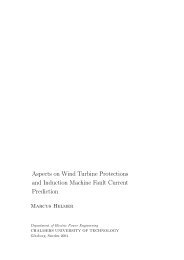

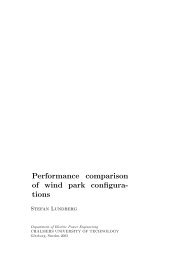
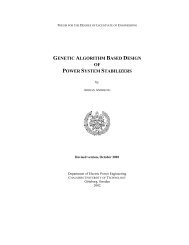

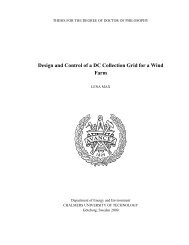

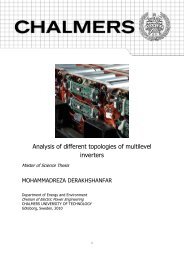

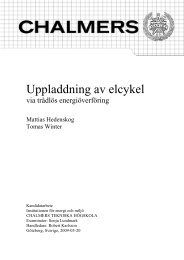

![LAPLACE OPERATOR.ppt [Lecture seule]](https://img.yumpu.com/42909900/1/190x135/laplace-operatorppt-lecture-seule.jpg?quality=85)

